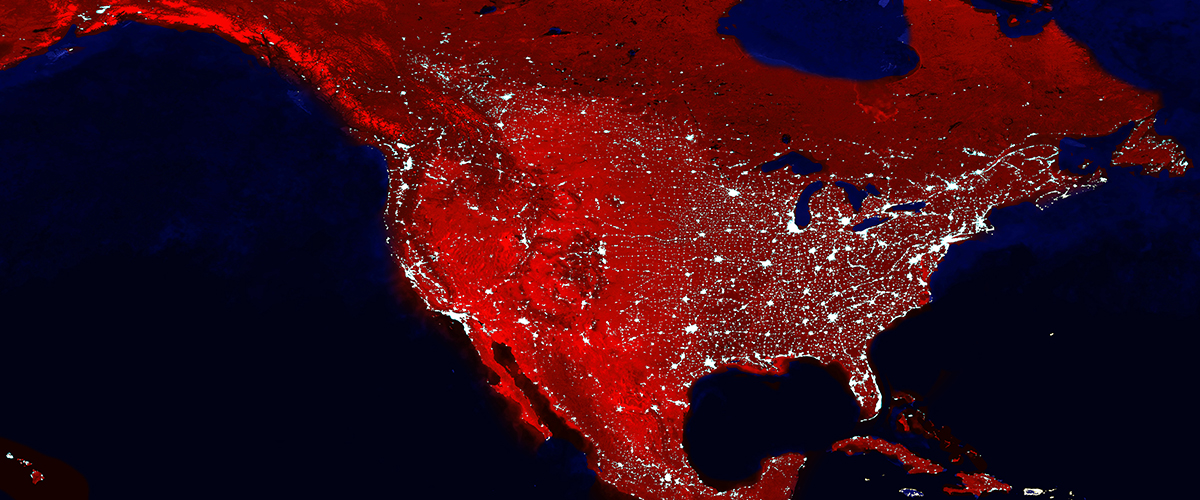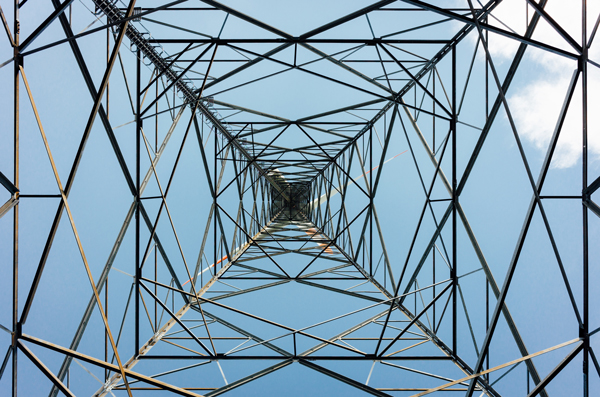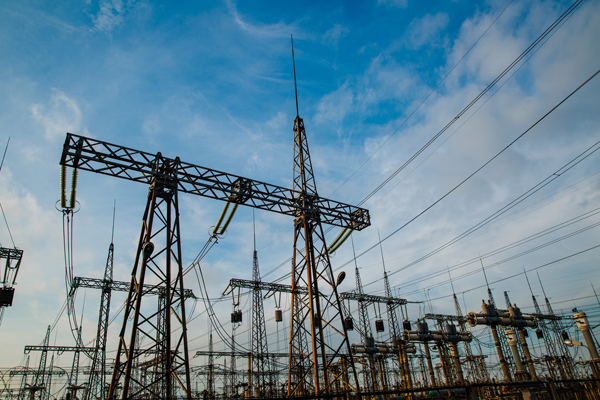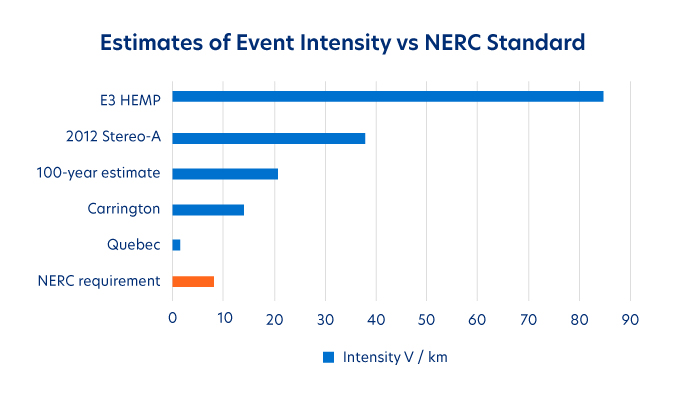If the dikes around New Orleans were built to government standards to resist the winds and swells of a Category 2 hurricane, those of us knowledgeable of history could spot an obvious problem. Hurricane Katrina, which destroyed much of the city in 2005, was a much more powerful Category 5 storm.
The problem is not that reinforcement of infrastructure does not meet standards; rather, the standard is set too low.
This hypothetical scenario is analogous to the present policy position in the United States concerning the levels of shielding against the threat of electromagnetic pulse (EMP). The standard set for electric grid protection is too low, based on what we know of the threats historically.
A Meta-analysis of Grid Vulnerabilities
In part one of this series , we summarized a significant meta-analysis of expert assessments of the North American electric grid’s resilience from reports by Congress and independent scientific research.
The previous post outlined the major vulnerabilities for a cascading failure cited in the study, essentially a blackout of all three national grid networks at the same time. Because the weak links in the network are high-voltage (HV) transformer stations that are expensive and difficult to replace, the predicted outcome would be a lengthy period — up to three years — to restore full functionality.
A prolonged and widespread grid failure spells disaster for the population in proportions unimaginable, given society’s reliance on electronics and bulk electrical distribution.
Additionally, the discussion included experts’ estimates of intensity and frequency of geomagnetic disturbances, based in part on three historical episodes, the enormous Carrington storm of 1869, the Quebec blackout in 1989 — a storm one-tenth the strength of Carrington — as well as smaller disturbances in the past century that affected grid performance.
This post explains further conclusions of the meta-analysis, those focusing on the policy and mitigation efforts of the United States against EMP.
Missed Opportunities to Harden the Grid
Given the existential threat that EMP presents, one would expect robust strategies, investments, and international cooperation to mitigate risks to infrastructure. At the very least, fortification of the grid’s resilience would prevent the cascade of paralysis and failures through closely related to the bulk power system (BPS).
The 2008 EMP Commission report highlighted the impracticality of protecting the entire electrical power system against EMP and geomagnetic storm threats. Instead, the focus shifted to reducing recovery and restoration times and minimizing the impact of these events through grid hardening.
By examining the independent scientific simulations on the energy levels in play in pulse events and geomagnetic disturbance and their induction of excessive high-voltage power lines, the authors of the meta-analysis study argue that the agency response so far has been an underestimation of threats as well as an inadequacy of preventive measures.
The grid’s protection hinges on grid hardening, achieved through devices like surge arrestors or heavy-duty filters that can divert excessive high current away from critical equipment like high voltage (HV) transformers. The estimated cost to harden the grid, as per Congressional EMP figures, stands at $3.8 billion.
Federal Energy Regulatory Commission (FERC) and North American Electric Reliability Corporation (NERC) are responsible for grid protection policies. FERC can only request NERC to propose grid protection standards; it lacks the mandate to enforce standards. In between these organizations lies the major shortfall of resilience efforts.
Source: NASA Image of the Earth to scale with the 2012 filament eruption.
Note: Proximity of Earth to the sun in this image is for scale purposes only.
A Controversial NERC Report
NERC has downplayed the threat posed by geomagnetic storms. In 2012, the same year the Earth narrowly missed an enormous solar flare by a margin of 9 days, NERC released a report asserting that geomagnetic storms would cause only temporary grid instability, not widespread destruction of transformers.
Critics argue that NERC’s report lacks validation against past storm data and underwent no peer review. Dr. Peter Pry criticizes the report for being written secretly and relying on industry meetings instead of data collection. Because large portions of the grid are managed by private energy companies, NERC consults with these utilities as a matter of course.
History contains many examples of industries resisting impending government regulation through various means of influence and political pressure. While identifying specific evidence to support Pry’s claim is beyond the scope of this post, it does offer a plausible and simple explanation as to why current policy standards turned out so low.
It would not constitute unusual behavior for electric suppliers to block attempts to mandate costly upgrades, given the actions of other industries in the same situation. Corporate players from tobacco to pharmaceuticals, and telecommunications to fossil fuels have seen it in their bottom-line interest to deemphasize risks to the public and endeavor to remove teeth from policy proposals intended to impose safety or public health protections.
Geomagnetic disturbance (GMD) standards set by NERC do not consider Carrington storm-class levels. NERC’s benchmark event intensity is set at 8 V/km, while studies suggest higher intensities. The bar graph here gives the analytic estimates for comparison.
Legislative Efforts
Congressman Trent Franks, of Arizona, introduced HR 2417, the SHIELD Act, in 2013 to grant FERC authority to require grid protection measures. However, the bill was not brought to the House floor for a vote, and explanations remain elusive.
Authors of the meta-analysis conclude the grid’s vulnerability to EMP and geomagnetic storms is underestimated, and current protection measures are inadequate. Addressing these shortcomings requires a reevaluation of standards and decisive legislative action. Further, they note the influence of campaign contributions on policy decisions underscores the need for a transparent and comprehensive approach to grid protection.
At TSS USA Manufacturing, we believe the threat to infrastructure is real, and that mitigation efforts — whether through government agencies or the private sector — are vital to the longevity of the North American grid. With the best technology available to resist excess current to protect both HV equipment and small-scale critical electronics, TSS can ensure your organization’s continuity through the worst-case scenario. Find out more about recent TSS innovations.





